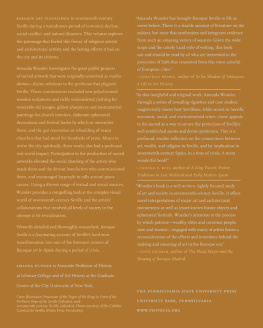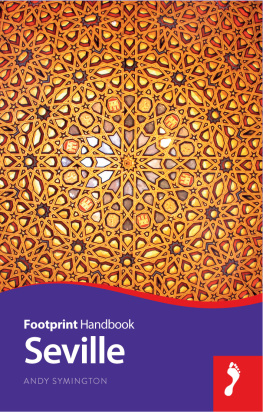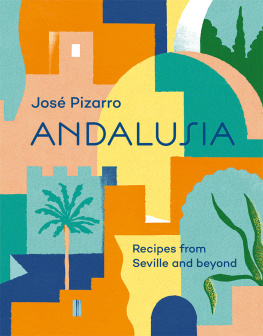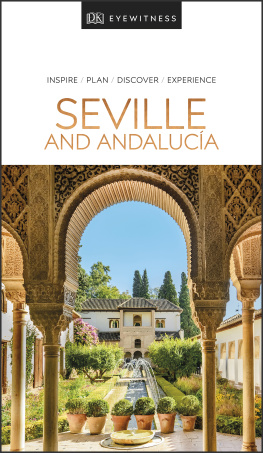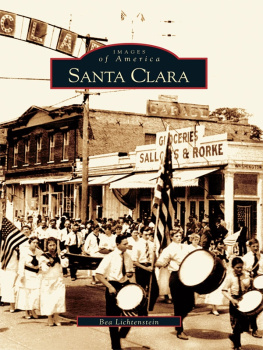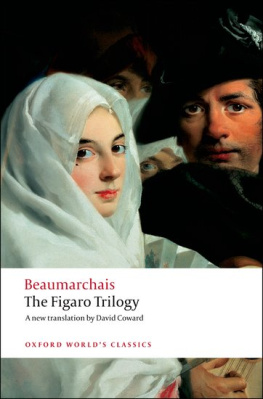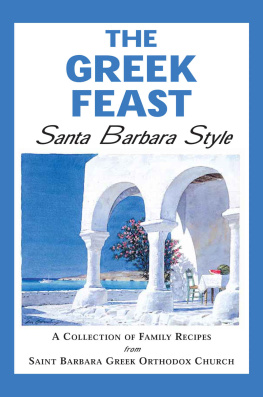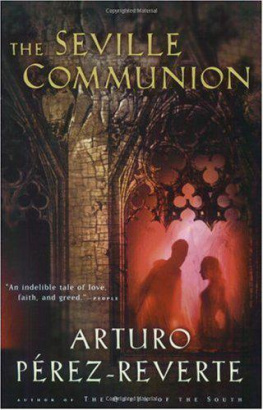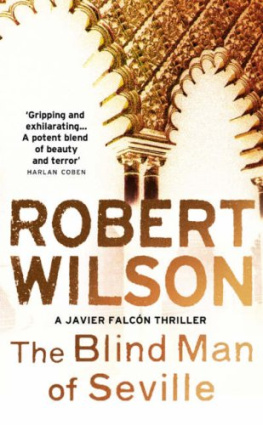Baroque Seville
BAROQUE
SEVILLE
Sacred Art in a Century of Crisis
AMANDA WUNDER
The Pennsylvania State University Press
University Park, Pennsylvania

Publication of this book has been aided by a grant from the Millard Meiss Publication Fund of the College Art Association.
This publication is made possible in part from the Barr Ferree Foundation Fund for Publications, Department of Art and Archaeology, Princeton University.
Library of Congress Cataloging-in-Publication Data
Names: Wunder, Amanda Jaye, 1972 , author.
Title: Baroque Seville : sacred art in a century of crisis / Amanda Wunder.
Description: University Park, Pennsylvania : The Pennsylvania State University Press, [2017] | Includes bibliographical references and index.
Summary: Explores the making of seventeenth-century Sevilles greatest Baroque monuments. Conceived as a spiritual solution to Sevilles problems, these works had a profound real-world effect on the city in crisis. Examines Baroque art as a collaborative process involving not only painters but altarpiece designers, plaster carvers, embroiderers, printmakers, and authorsProvided by publisher.
Identifiers: LCCN 2016023514 | ISBN 9780271076645 (cloth : alk. paper)
Subjects: LCSH: Christian art and symbolismSpainSevilleModern period, 1500 | Art, BaroqueSpainSeville. | Art, SpanishSpainSeville17th century. | Group work in artSpainSevilleHistory17th century. | Seville (Spain)History17th century.
Classification: LCC N7962.S48 W86 2017 | DDC 709.03/2dc23
LC record available at https://lccn.loc.gov/2016023514
Copyright 2017 The Pennsylvania State University
All rights reserved
Printed in China
Published by
The Pennsylvania State University Press,
University Park, PA 168021003
The Pennsylvania State University Press is a member of the Association of American University Presses.
It is the policy of The Pennsylvania State University Press to use acid-free paper. Publications on uncoated stock satisfy the minimum requirements of American National Standard for Information SciencesPermanence of Paper for Printed Library Material, ansi z39.481992.
FOR SHAMUS AND ANDERS
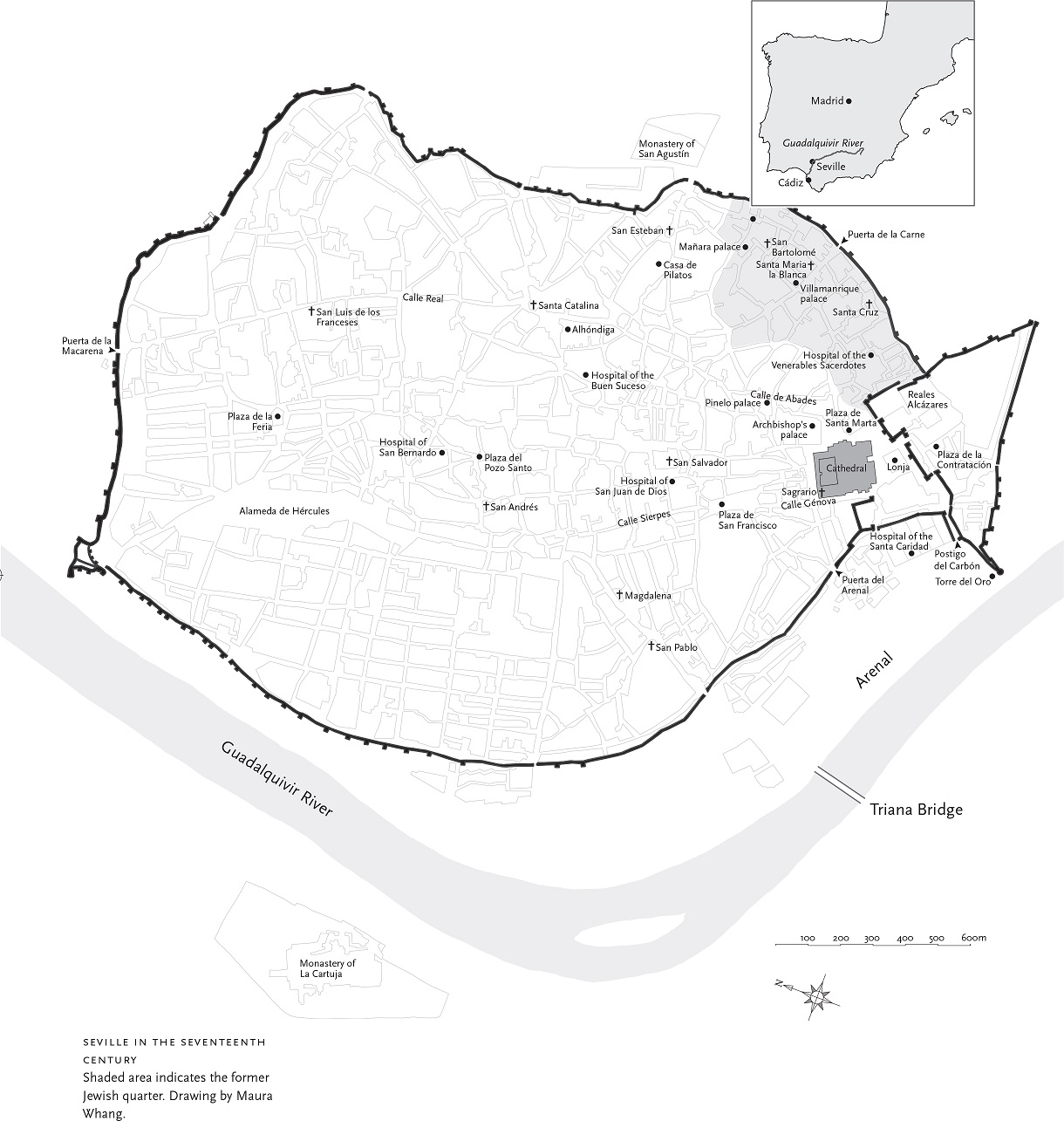
Contents
.
.
.
Research for this book was supported by the Fulbright Program, the Spanish Program for Cultural Cooperation, the American Philosophical Society, the Bibliographical Society of America, the Princeton Committee for Italian Studies, the University of New Hampshire Graduate School, and the UNH Center for the Humanities. Funding for images was provided by a George Shuster grant from Lehman College, a PSC-CUNY Research Award, and the Barr Ferree Foundation Fund for Publications through the Princeton Department of Art and Archaeology. The Barr Ferree Foundation Fund and the College Art Associations Millard Meiss Publication Fund supplied generous subventions for this books publication.
I would like to acknowledge the institutions that granted me access to their collections and permission to reproduce images, and to thank the librarians, archivists, and other staff members who kindly assisted me in person and from a distance. In Seville: the Archivo de la Catedral, the Archivo General del Arzobispado, the Archivo Municipal, the Biblioteca Capitular y Colombina, the Cabildo Catedral, the Fundacin Focus-Abengoa, the Museo de Bellas Artes, and the Biblioteca and Fototeca of the Universidad de Sevilla. In Madrid: the Archivo Histrico Nacional, the Biblioteca Nacional de Espaa, and the Biblioteca Histrica Marqus de Valdecilla at the Universidad Complutense. In Rome: the Vatican Secret Archives. In New York: the Hispanic Society of America, with special thanks to Patrick Lenaghan and John ONeill. I am indebted to the staff in the Interlibrary Loan department at the Mina Rees Library of the CUNY Graduate Center, who made it possible for me to complete this book in New York.
Fernando Quiles Garca at the Universidad Pablo de Olavide and Teodoro Falcn Mrquez and Teresa Laguna Pal at the Universidad de Sevilla cordially answered many queries and shared their research and expertise on the art history of Seville. At the Real Academia de Bellas Artes de Santa Isabel de Hungra, Margarita Toscano San Gil and Ramn Corzo Snchez have offered invaluable assistance and countless kindnesses over the years.
Assembling the illustrations for this book proved to be an unexpected pleasure, since it gave me the opportunity to work with Maura Whang, M.Arch., who prepared the plans and the frontispiece map, and Pedro Feria Fernndez, whose beautiful photographs of the Seville cathedral and other churches illustrate the following pages. Enrique Aylln Gonzlez, Joaqun Gmez, Luis Manuel Jimnez Domnguez, and Ral Salamero Snchez-Gabriel generously contributed their captivating photos of Sevilles sacred spaces and celebrations, which offer visual testimony to the continued vibrancy of the seventeenth-century artworks and traditions that are the subject of this book.
This project has its roots in an undergraduate year spent in Seville with the UNC in Sevilla program, through which I had the good fortune of studying Spanish at the Giralda Center with Rosario Trigos Delgado and my first introduction to Spanish history at the Universidad de Sevilla. Two extraordinary historians and advisorsLaurie Nussdorfer at Wesleyan University and Anthony Grafton at Princeton Universitypatiently instructed me in the tools of their craft and inducted me into the wondrous world of the rare-books room. During my years of graduate study in the History Department at Princeton, Patricia Fortini Brown and her graduate students in the Department of Art and Archaeology were essential interlocutors to whom I owe my art-historical education. I was also fortunate to work with Kenneth Mills, William Jordan, and Theodore Rabb and to meet the inimitable Teofilo Ruiz during my years at Princeton. Jonathan Brown provided expert advice as I was writing my dissertation and first formulating the ideas for this book. For many years I have leaned upon the generosity of Spanish historians James Amelang, Jodi Bilinkoff, and Richard Kagan, who began as unofficial mentors and became terrific friends. More recently, Evelyn Welch has been a source of valuable support. Gridley McKim-Smith read an early version of this manuscript and provided the encouragement that launched the book into existence.
My approach to this book was shaped by my experience as a fellow in the Department of European Sculpture and Decorative Arts at the Metropolitan Museum of Art in 20056. It is a pleasure to express my gratitude to museum fellowship coordinator Marcie Karp and to thank the staff at ESDA and the Antonio Ratti Textile Center. During my year at the Met and in the years since, I have learned a great deal from Thomas Campbell, Danille Kisluk-Grosheide, Charlotte Vignon, Ian Wardropper, and Melinda Watt.
I would like to thank colleagues past and present at the History Department at the University of New Hampshire, the History Department at Lehman College, and the Art History program at the CUNY Graduate Center. At Lehman, Marie Marianetti has been unfailingly supportive as department chair, Timothy Alborn read and critiqued my manuscript, and Jeannette Graulau answered questions about early modern currency and economic history. Carmen Saen-de-Casas tirelessly assisted with the translations in this book and brought great humor to the task. I also thank my colleagues in the Art History program at the CUNY Graduate Center for welcoming a historian into their department, with special thanks to chairs Kevin Murphy, Claire Bishop, and Rachel Kousser, and to Assistant Program Officer Andrea Appel, for moral support and space to work. Clare Carroll, coordinator of Renaissance Studies, has made the Graduate Center an intellectual home for early modern studies. Graduate research assistants Ian Wallace and Rachel Valinsky assisted in the preparation of this manuscript.

